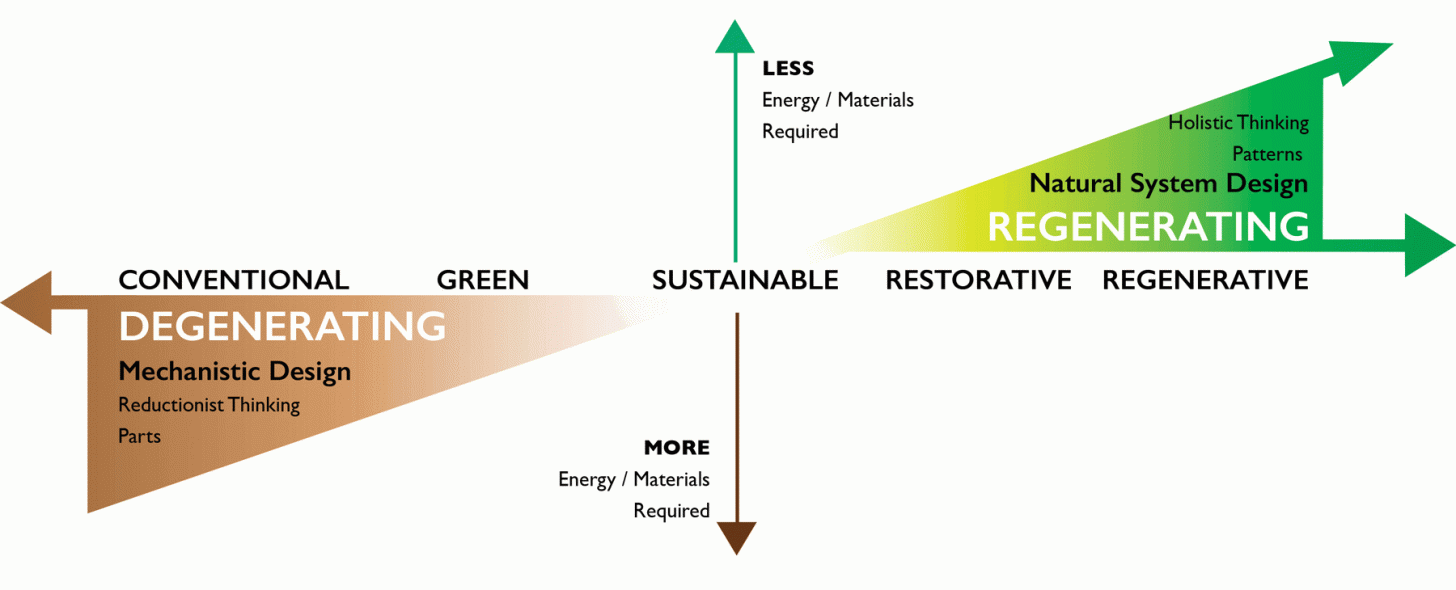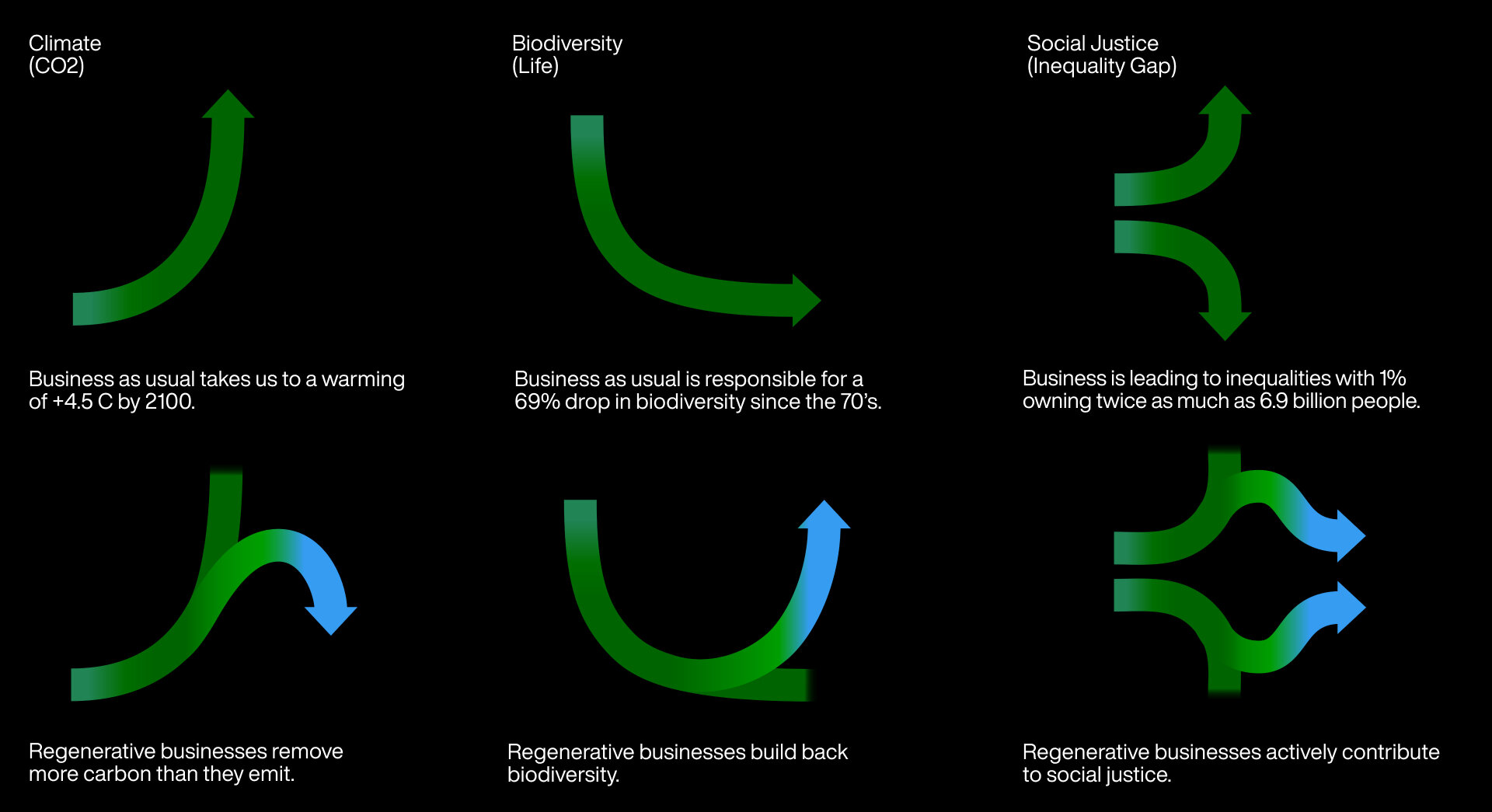I’m reading Jason Hickel’s Less is More: How Degrowth Will Save the World. I’m halfway done, but here’s my basic understanding:
Green growth is a myth. The evidence is clear that we can’t continue to live under the imperative of infinite growth — growth at any cost.
I haven’t reached the solution part of the book. But one idea has been inspiring me lately — regenerative design.
Yet I don’t know where to place it on the spectrum of supporting the green myth vs actual resolution to ecological disaster. I’ll try to understand the concept of “regenerative design” without getting into the how.
The underlying principle comes from reasoning that if people have changed the Earth’s ecosystem and caused an ecological disaster, they are capable of repairing it on a planetary scale.
It requires a different kind of thinking, and this is where regenerative design comes into play.
The regenerative design aims to not do less harm (sustainability) but be a positive force that restores, renews or revitalises.

via Why sustainability is not enough
We can apply regenerative philosophy by asking: how can we put life — the planet, human life, and everything it sustains — at the centre of everything?
In an article about regenerative design, SPACE10 has an easy to understand example with carbon.
Carbon is considered the number one enemy of climate change.
In reality, carbon is a building block of life and is essential to the health of the soil and the oceans. Without carbon, the soil becomes infertile, and ocean habitats need carbon to thrive.
We have broken the healthy cycle of carbon by emitting too much of it into the atmosphere. At the same time, we’ve been destroying the most efficient carbon sinks — land, forests and oceans.

via SPACE10
Regeneration means improving an ecosystem and leaving it better than we found it.